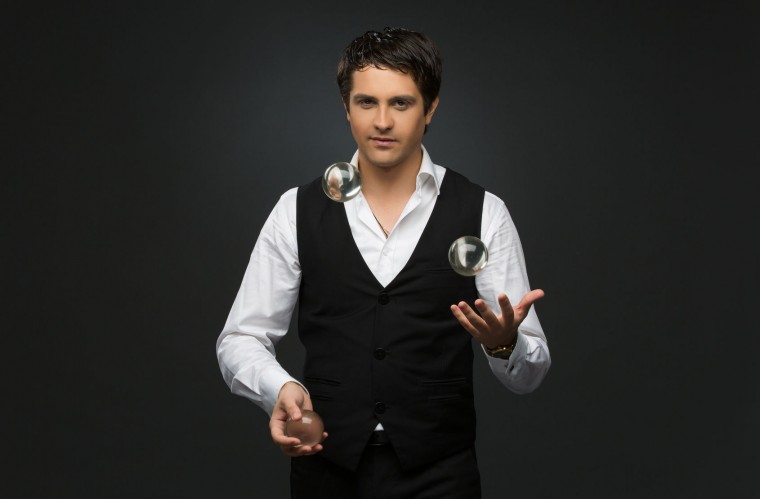
Before I left for physical therapy school, I had one great fear: no matter how hard I tried, I was going to be a bad PT. I confided this fear to a mentor of mine, a well-respected PT himself. His response is one I’ve thought about regularly since that day- that with a solid foundation in school and good mentorship afterwards, there was no doubt I would be a great PT.
Having now completed my education and practiced for a year, I realized that my mentor’s comments ring true for not just me, but for anyone entering the profession.With a new cohort of freshly licensed PT’s and PTA’s coming in to the profession, I took some time to reflect upon the major lessons I have learned over my first year in practice. The below points have resonated with me most, but please feel free to add your own in the comments section below!
1. Mentorship is made by you, not provided by someone else. When interviewing for jobs, we all hear promises of weekly mentorship time and guided learning. Yet, if you do not prioritize this time, it’s likely to get lost in the pressures of the day. It’s our responsibility to make sure our mentorship time actually happens and is effectively used. Here are a few practices I have found helpful: a) block off your mentor time on your schedule- it’s simple, but makes the time more official; b) make sure your mentor is someone who you want to learn from; c) plan it out- set individual goals for yourself each time you meet with your mentor.
2. Don’t compromise your values. Coming out of school, the lines between right and wrong seem pretty clear. However, those lines may quickly blur by pressures to bill more units, see more patients, or take on a practice outside of your ethical comfort zone. Remember that these decisions are ultimately in your hands- it’s your license and happiness that’
s on the line by being in a job that challenges your morals, ethics, and ability to take quality care of your patients.
3. Develop self-management strategies and remember your role. Patient care is hard. And a lot of responsibility. While we may see 60 patients per week, our patients only see us once or twice. Many times, we are the only health professional caring for their well-being. Because of the time we spend with our patients and trusting relationships we develop, many patients often end up airing all of their concerns to us. We may not be trained as social workers or psychologists, but the nature of our job demands we play a role as a quasi director of their care. There’s no doubt about it- doing this for patient after patient is mentally, physically, and emotionally draining. In response to this fatigue, I’ve developed a couple strategies to make my day more manageable. First and foremost, I always try to remember my role- we don’t have the time or training to be everything to everyone, so I make sure to refer to other professionals when appropriate, even when it means embarking on a difficult conversation. Second, I try to take 2-3 minutes between patients to decompress. Just a few minutes allows me to refresh, knock out a bit of documentation, and ensure I approach the next patient as a clean slate. I find I can bring more to the treatment session with those couple minutes to myself, even if it means I’m slightly late to the next treatment session.
 4. Attitude is truly infectious. It’s easy to fall down the wormhole of complaining about patients or co-workers, but finding ways to stay positive, smile, and bring joy to the clinic is much more rewarding. We all have difficult days, but bringing a positive attitude to work can change the entire culture within a clinic. I challenge you to be that compassionate and empathetic person that brings positivity to a clinic. Once you do, your colleagues will start to look at you as a leader and your patients will notice.
4. Attitude is truly infectious. It’s easy to fall down the wormhole of complaining about patients or co-workers, but finding ways to stay positive, smile, and bring joy to the clinic is much more rewarding. We all have difficult days, but bringing a positive attitude to work can change the entire culture within a clinic. I challenge you to be that compassionate and empathetic person that brings positivity to a clinic. Once you do, your colleagues will start to look at you as a leader and your patients will notice.
5. Recognize your needs. Then verbalize and fight for them. Everyone has an idea of what it means to be successful, but only you know what you need to be successful. Too often, I see new employees try to conform to a system and environment that does not work for them. Whether you feel you need more mentorship, want to attend a continuing education course, or even would like something as simple as a slightly longer lunch, do not let a resentful feeling brew- approach your employer in a respectful fashion. Chances are that your employer is looking to support you, but does not see your needs. If your employer is not willing to acknowledge or support your needs, it might be time to consider a change.
6. Reflection really is important. Be a conscious practitioner. In PT school, our class reflected on everything. In fact, I’m pretty sure we reflected on our reflections. We reflected so much that reflection became a dirty word. However, I have come to find great power held within reflection. Make sure to periodically ask yourself, “what could I have done better during my last treatment session,” or “what could I improve upon from last week?” It’s easy to go through the motions, but approaching your treatment session consciously, by analyzing what you are doing, why you are doing it, and how you can improve will lead to greater growth and fulfillment.
7. It’s worth it. Patient care is challenging. Most days are exhausting. Yet, if you give it your all and fully engage with your patients, it can be extremely rewarding. The feeing you get when someone looks you in the eye, shakes your hand, and says a genuine ‘thank you for your help,’ is a feeling I have never reproduced elsewhere in the world. We play a special role in our patients’ lives, giving them our time, touch, and knowledge. Cherish your relationships with your patients and never forget what it feels like to help someone achieve their goals.
Any big lessons I missed? Please consider adding your own lessons to the list in the comments section below!
About the Guest Blogger: Josh D’Angelo, PT, DPT served as APTA Student Assembly President in 2013 and is now active with APTA’s DC Chapter and Private Practice Section. He graduated from George Washington University’s Doctorate of Physical Therapy program in 2013, where he was the University’s sole student to win the George Washington Award. Josh is also a former APTA Mary McMillan Scholarship awardee and is currently practicing in the outpatient orthopedic setting in Washington, D.C. He is a regular contributor at PTHaven.

Imagine life as a game in which you are juggling some five balls in the air. You name them - work, family, health, friends and spirit - and you’re keeping all of these in the air. You will soon understand that work is a rubber ball. If you drop it, it will bounce back. But the other four balls - family, health, friends and spirit - are made of glass. If you drop one of these, they will be irrevocably scuffed, marked, nicked, damaged or even shattered. They will never be the same. You must understand that and strive for balance in your life.




